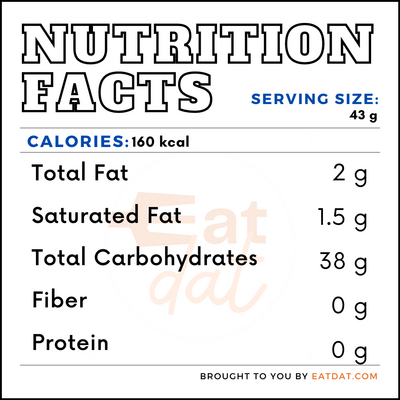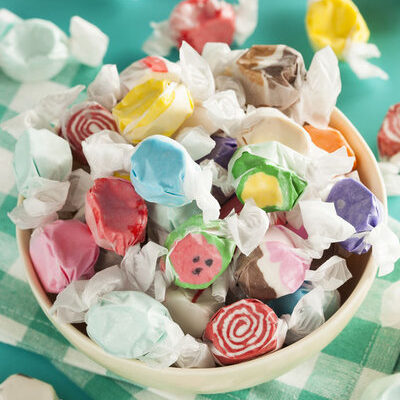Modern machines can produce about 1,000 pieces of this sweet treat every minute. According to Statista, 2.29 million people devoured five or more servings of Laffy Taffy chocolate within one month during 2019.
According to Amazon, the top five best-selling brands are:
- Airheads
- Laffy Taffy
- Blue Raspberry Frooties
- Now & Later
- Sweets Salt Water Taffy
Origin of taffy
This candy was first made in Atlantic City, New Jersey in 1883 when a heavy storm flooded David Bradley’s candy store. All the candies in his store were drenched in salty Atlantic Ocean water. After a while, a small girl came into his store to buy candy and Mr. Bradley decided to jovially hand her some “salt water taffy.” The girl tasted the candy and then walked to the beach to share the rest with her friends. Bradley’s mom overheard the entire discussion from the back of the store and liked the new name, deciding to use it from then onward.
In the early years, people normally prepared the candy in copper kettles over coal fires, cooled it on marble slabs, and then pulled it from a large hook. In 1886, Joseph Fralinger made the candy widespread by boxing it and selling it in Atlantic City. His first main competitor was Enoch James, who made the treat less sticky and easier to unwrap. James also mechanized the pulling process and cut the candy into small sizes. Today, vendors still sell this candy in the Atlantic City and other tourist regions in Canada and the US.
Nutrition
In a serving size of seven pieces (43g) of this candy, there are:

According to studies, people who consume candy may live longer. Furthermore, the sugar in them can help you concentrate on your tasks. However, taffy and other candies also have their side effects. If you eat too much of them, you will experience tooth decay and enamel damage. Consuming too much sugar can also lead to weight gain, decreased nutrient intake, and increased risk of disease.
Commercial production
The first step in producing taffy involves mixing the ingredients in a pot and allowing them to cook. After cooking, the next step is pulling, which makes the candy about 60 inches long by looping it again and again over the hook. This action causes the mix to trap air, making the candy soft, so it can be shaped by hand-rolling it on marble tables.
Then, the candy is cut into two-inch pieces with scissors and wrapped in wax paper. Today, companies produce this candy on an industrial scale by mixing it in large stainless steel tanks, followed by vacuum cooking, and finally using machines that pull and package the candy.
Application
When making this candy at home, here are some tips to keep in mind:
- Use flavors and colors that suit your taste.
- Prepare all your ingredients and organize them before cooking.
- After cooking the candy mixture, wait a while to let it cool before shaping. This way, you will avoid burns.
- Grease your hands before shaping the cooled mix.
It’s best to eat this homemade candy within seven days. If stored in the refrigerator, it can last for two weeks. Whereas, if you store it in the freezer, it can be kept for six months.
Taffy recipes
This sweet treat is simple to make at home. Here are recipes you can try:
FDA regulation
The FDA specifies the recommended reference amount for candies, consumed per eating occasion. The reference quantity for this candy is 0.033 pounds. Manufacturers are meant to convert this reference amount to the label serving size in a household measure. This is also exempt from hard analysis or preventative controls conducted by the FDA, as it is considered a low-risk food.
References
Shenkman, Ken. “The History of Salt Water Taffy.” bulkcandystore.com, bulkcandystore blog, 12 Dec. 2019, www.bulkcandystore.com/info/history-of-salt-water-taffy/.
Candy club. “The (Surprising) Health Benefits of Candy.” candyclub.com, Candyclub blog, 9 July 2019, www.candyclub.com/blog/health-benefits-of-candy/.

